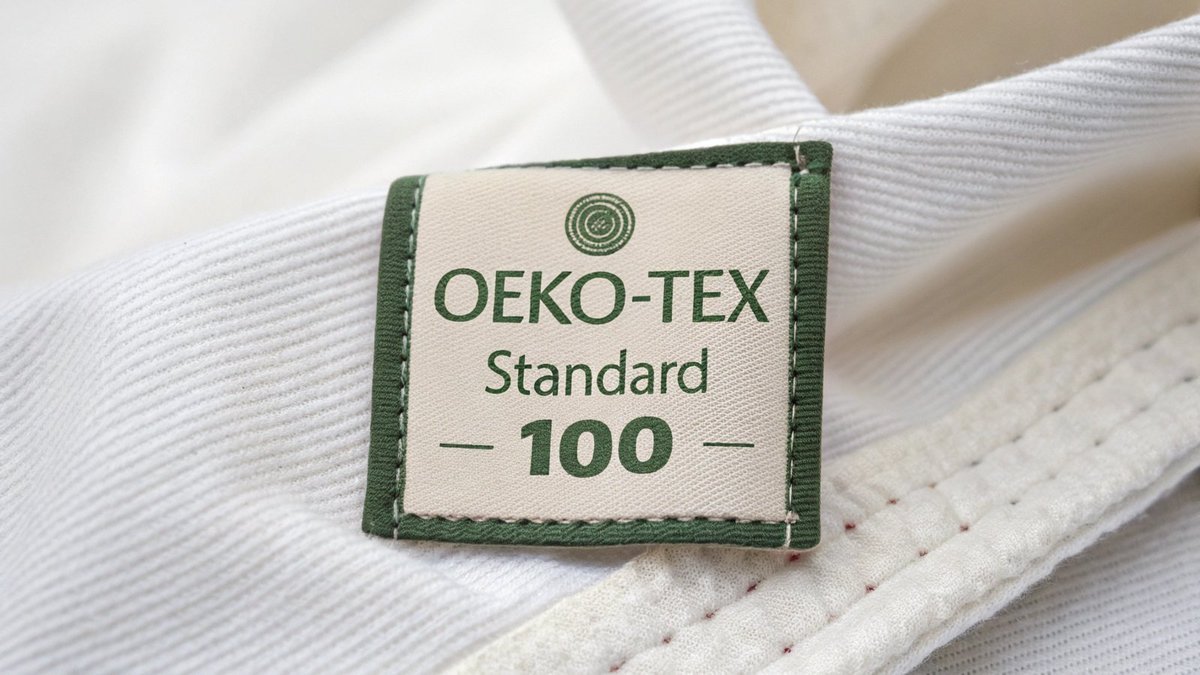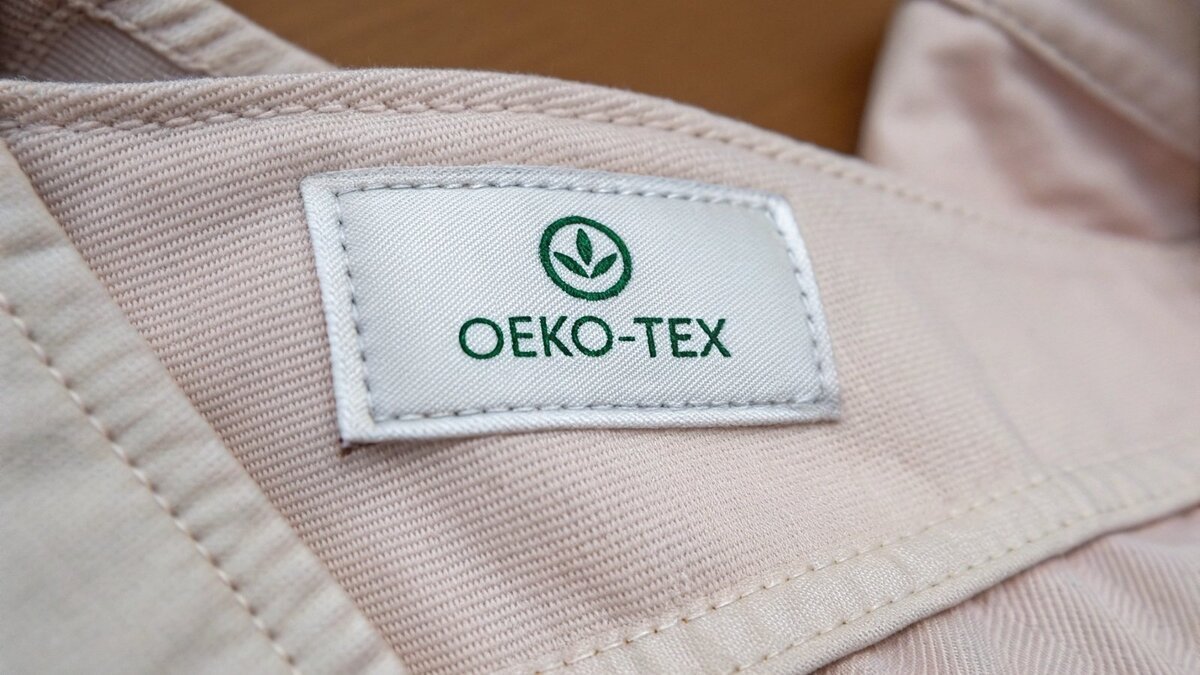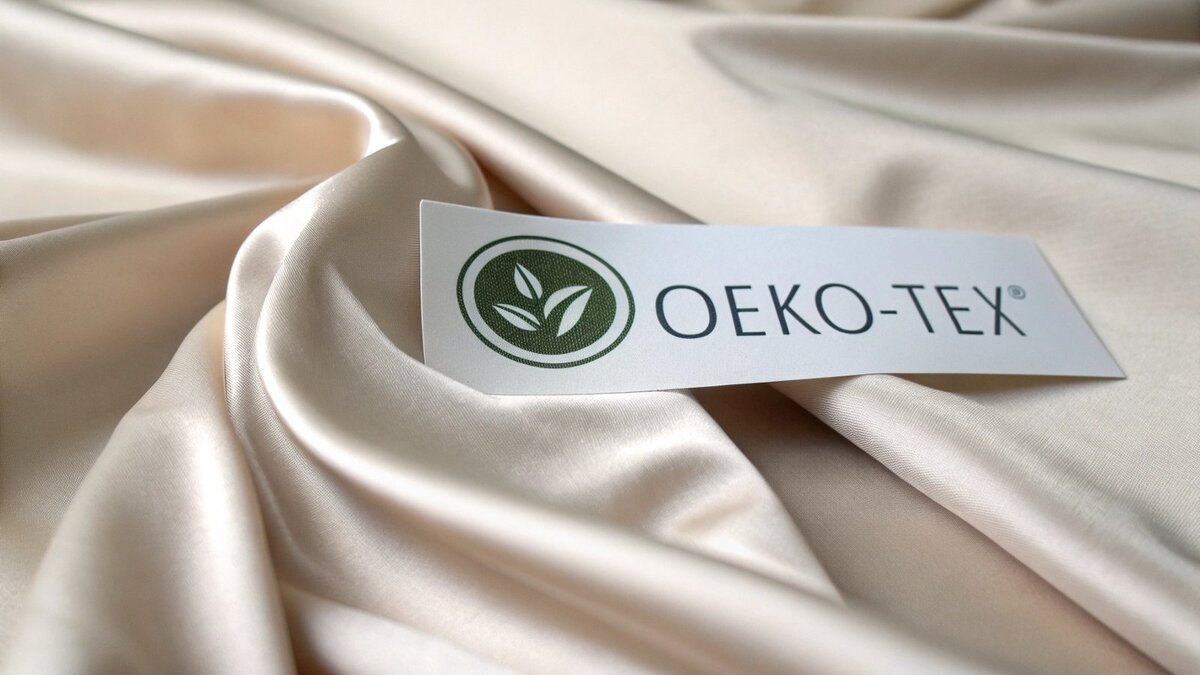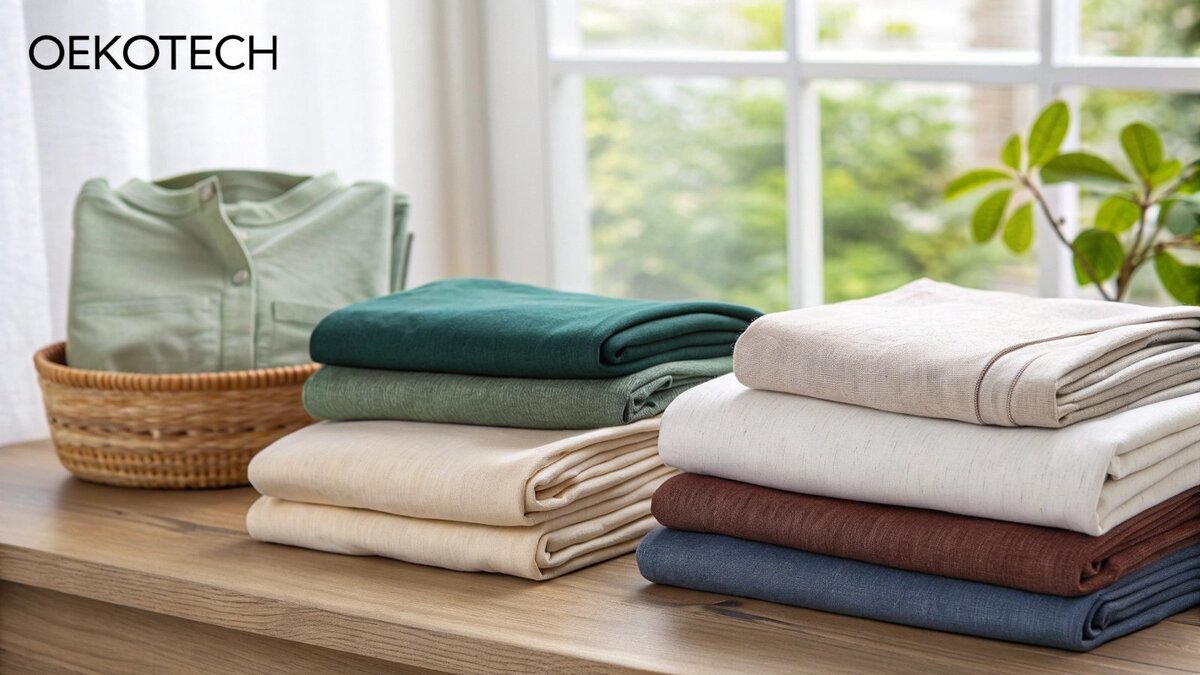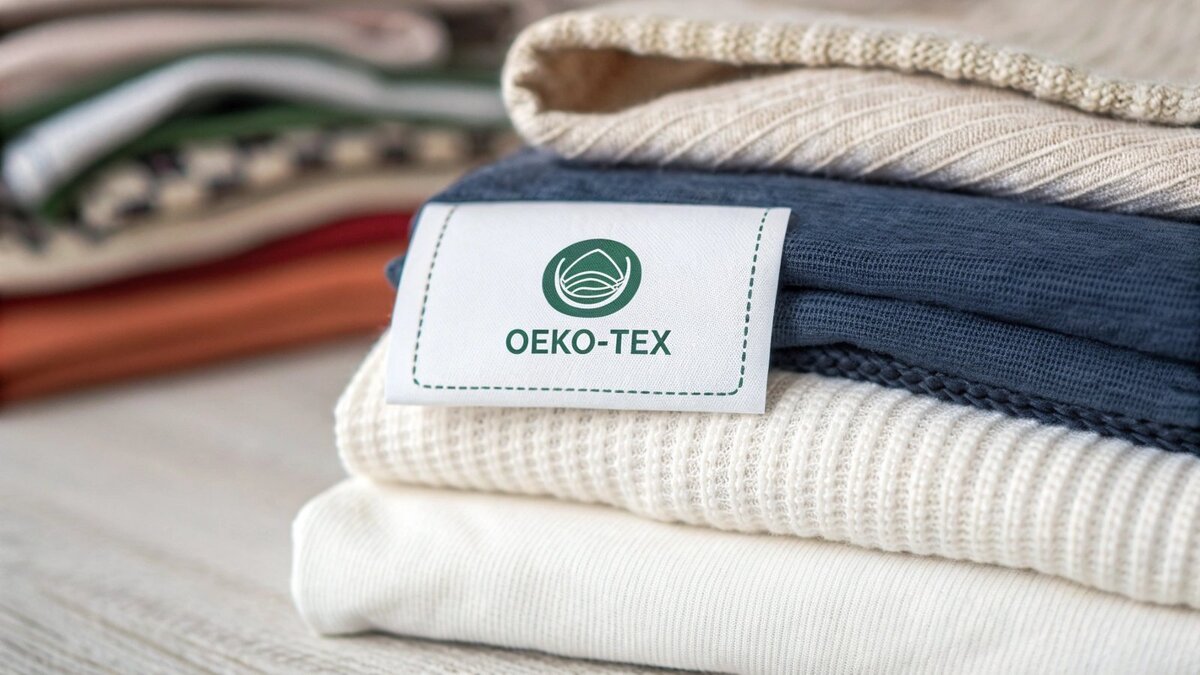You see "OEKO-TEX" on a product, but aren’t sure if it’s just marketing fluff. This uncertainty can be risky, but this label is a key sign of safety and quality.
The OEKO-TEX® Standard 100 label means the textile product has been independently tested for over 1,000 harmful substances. It certifies that every component, from the thread to the fabric, is safe for human health and won’t irritate your skin, giving you confidence in your purchase.
That label is more than just a sticker on a towel. It’s a promise of safety that I’ve seen build incredible trust between brands and their customers for years. It tells a story that your brand cares about what goes next to a person’s skin. But the world of certifications can feel complicated, with different labels and terms that sound similar but mean very different things. To make the best decisions for your products, you need to understand exactly what you’re looking at. So let’s break it down further, answering the most common questions I hear from clients every week.
What is OEKO-TEX certified mean?
The term "certified" sounds great, but what does it really promise? Without knowing, you might miss its true value or what it guarantees for your towels and textiles.
OEKO-TEX certified means a product and all of its parts have been independently tested and proven free from harmful levels of toxic substances. This global standard ensures the final product is safe for you and your family to use every day, directly against your skin.
When we talk about OEKO-TEX certification, we’re usually referring to the STANDARD 100 by OEKO-TEX®. I always tell my clients this is the gold standard for product safety in textiles. It’s not just about the main fabric. The certification process is incredibly thorough. It covers every single component of the finished item. That includes the threads used for stitching, any buttons or zippers, the printed labels, and of course, the fabric itself. Each part is tested against a list of over 1,000 chemicals known to be harmful. The standards are also updated annually to keep up with new scientific findings, so the certification remains relevant.
A key thing to understand is that OEKO-TEX classifies products based on their intended use. This ensures the safety limits are appropriate for how close the textile gets to the skin.
OEKO-TEX Product Classes
| Product Class | Description | Examples |
|---|---|---|
| Class I | Textiles for babies and toddlers up to 3 years old. | Underwear, bedding, soft toys. |
| Class II | Textiles with large direct skin contact. | Towels, t-shirts, bed linen. |
| Class III | Textiles with no or little direct skin contact. | Jackets, belts, outerwear. |
| Class IV | Furnishing and decorative materials. | Curtains, tablecloths, carpets. |
For towels, we always aim for Class II, as it has stricter requirements than Class III because of the constant skin contact. This certification gives your customers—and you—verifiable peace of mind.
Is OEKO-TEX real silk?
You want to source luxury silk, but you worry about hidden chemicals. Low-quality silk treated with harsh dyes can ruin the experience, making the OEKO-TEX label especially important to understand.
OEKO-TEX does not certify if a fabric is real silk. Instead, it certifies that the silk product has been tested and is free from harmful substances. It is a mark of human-ecological safety, not material authenticity. You can have real silk that is not certified.
This is a point of confusion I clear up often. The OEKO-TEX label is not a stamp of material authenticity. It doesn’t confirm that you’re holding 100% pure silk, cotton, or wool. Its entire purpose is to confirm that the material, whatever it may be, is safe to touch. This is incredibly important for natural fibers like silk. While silk is a natural, luxurious material, its production process can introduce unwanted chemicals. These can come from pesticides used on mulberry leaves fed to silkworms, harsh bleaches used to create a uniform white color, or toxic azo dyes used for vibrant shades.
I remember working with a new brand launching a line of high-end silk robes. They were very focused on getting the highest momme count, a measure of silk density. But I explained that for a luxury wellness product, an OEKO-TEX STANDARD 100 certification was just as crucial. It communicates to the customer that the beautiful robe touching their skin is not only luxurious but also clean and safe. So, when you see an OEKO-TEX label on a silk product, think of it this way: it’s not telling you that it’s silk, it’s telling you that the silk is safe.
What is the meaning of Oekotech?
You might hear "Oekotech" or "Ecotech" and assume it’s the same as OEKO-TEX. Confusing these terms could lead you to misunderstand a product’s real environmental or safety claims.
"Oekotech," often used interchangeably with "Ecotech," is a general term for ecological textiles—fabrics made with a focus on environmental sustainability. It is a broad concept, not a specific, verifiable certification like OEKO-TEX, which is a registered trademark focused on product safety.
It’s an easy mistake to make, as the names sound so similar. However, their meanings are quite different. "Oekotech" or "Ecotech" is a descriptive category, not a formal standard. It refers to the entire field of developing textiles in a way that is kinder to our planet. This concept includes a wide range of practices, like using organic fibers, sourcing recycled materials (like polyester from plastic bottles), using less water and energy during production, and ensuring a product is biodegradable at the end of its life. A company might say its products are based on "Oekotech principles," but this is a self-declared claim about their environmental goals.
OEKO-TEX, on the other hand, is a specific, independent third-party certification system with a clear focus. Let’s compare them.
Oekotech vs. OEKO-TEX
| Feature | Oekotech / Ecotech | OEKO-TEX |
|---|---|---|
| Primary Focus | Environmental Sustainability | Human-Ecological Safety |
| Scope | Broad concept, philosophy | Specific testing criteria for chemicals |
| Verification | General claim, not standardized | Independent testing, verifiable label ID |
| Meaning | The product is eco-friendly | The product is safe from harmful substances |
At TowelTrend, while we use OEKO-TEX STANDARD 100 as our baseline for safety, we also help clients who want to embrace "Oekotech" principles. For them, we might explore materials certified by the Global Recycled Standard (GRS) or other eco-labels.
Is OEKO-TEX made from cotton?
It’s a common misconception to think OEKO-TEX is a type of special, safe cotton. This mistake could limit your thinking, as the label applies to far more than just one fabric.
OEKO-TEX is not a material or a type of cotton. It is a safety certification system that can be applied to products made from many different materials, including cotton, polyester, silk, wool, and blends. It confirms the finished product is safe, whatever it’s made of.
I cannot stress this enough: you cannot make a towel from OEKO-TEX. You make a towel from cotton, and then you get it OEKO-TEX certified. The certification applies to almost any textile product you can think of. So when you see the STANDARD 100 label on a cotton towel, it means that the finished towel has been tested for residues of things like pesticides from the cotton field or harmful dyes and finishes used in the factory. The cotton itself could be conventionally grown.
However, OEKO-TEX has expanded its offerings to address the growing demand for organic products. This is where another label comes in, which can cause confusion.
Standard 100 vs. ORGANIC COTTON by OEKO-TEX
-
STANDARD 100 by OEKO-TEX
This is the classic safety certification. When applied to a cotton product, it ensures the final item is free from harmful chemicals. It does not make any claims about whether the cotton was grown organically. It’s all about the safety of the end product.
-
ORGANIC COTTON by OEKO-TEX
This is a different, more specific label. It tests for harmful substances just like Standard 100, but it also verifies that the cotton is from organic origin. It tests for genetically modified organisms (GMOs) and traces the fiber from the farm to the final product. A product needs to contain at least 70% organic cotton to qualify. This label offers a double promise: the cotton is organic, and the final product is safe.
For my clients, the choice depends on their brand story. If the primary goal is to assure every customer of safety, STANDARD 100 is perfect. If the brand’s identity is built around being natural and organic, then the ORGANIC COTTON label is the one to seek.
Conclusion
The OEKO-TEX label is not about what a textile is made of, but about its safety. Understanding it gives you confidence that the product is harmless for your customers.

